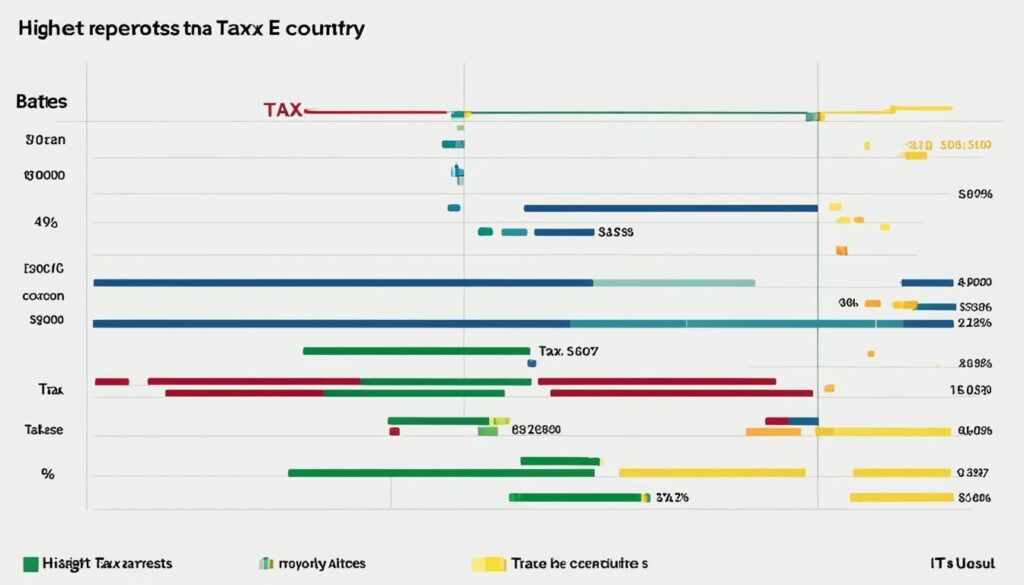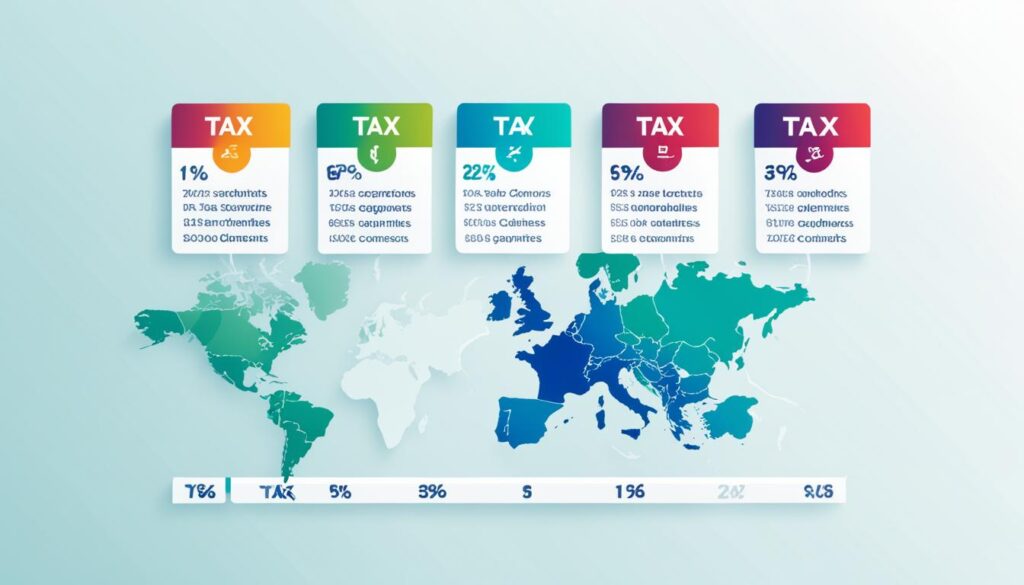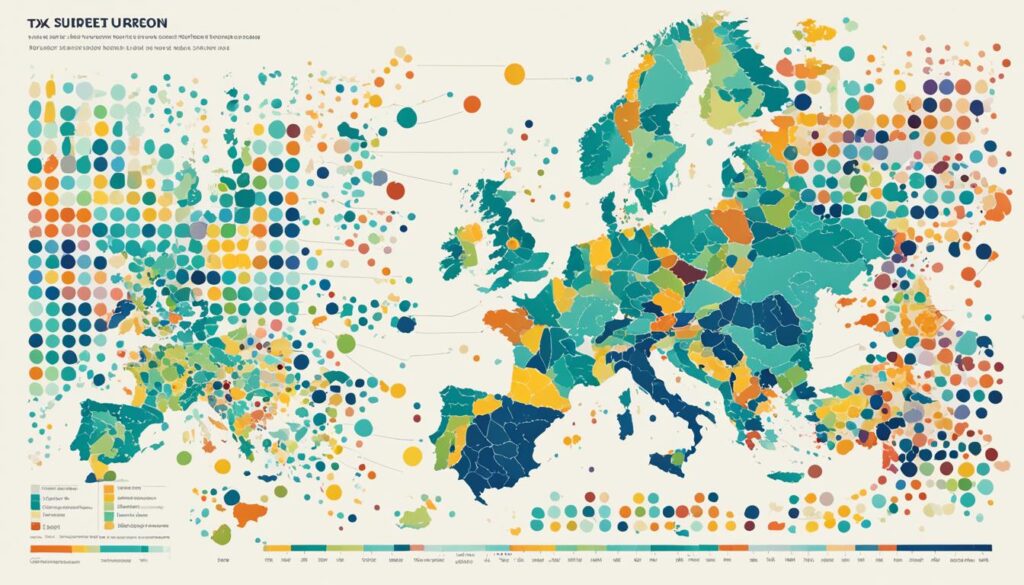“In this world, nothing can be said to be certain, except death and taxes.” – Benjamin Franklin. This famous quote by one of America’s founders sets the stage for our look at the EU’s highest tax rates. We’ll explore where people and businesses pay the most taxes. This will show us the different ways taxes shape the EU’s economy.

Taxes are key to modern life, paying for important public services and buildings. But how much governments tax can change a lot in the European Union. Knowing these differences helps us understand what each country values and its economic plans.
Taxes in the EU – in which countries are paying the highest amount of taxes
Looking at the tax burden in the European Union can be tough. Some countries have low tax havens and chances for tax optimization. Others put a big tax avoidance load on people and businesses.
Studies show Denmark, France, and Belgium have the highest tax rates in the EU. They have strong social welfare systems. These are paid for by high taxes from people and companies.

Sweden and Norway, in Scandinavia, also have high taxes. They follow a social democratic model. This means a big social safety net, paid for by high tax burden on income from people and companies.
On the other hand, Ireland and the Netherlands are seen as tax havens. They offer good chances for tax optimization. This can make other EU countries unhappy, as it can weaken their tax base.
Tax Burden: Personal Income Tax Rates Across Europe
In Europe, countries have different ways of handling personal income tax. Some have high taxes, while others are more moderate. It’s important to know how much tax people pay in each country. This helps us understand the tax burden and how it affects people’s lives.
Exploring Top Personal Income Tax Brackets
In the European Union, the top tax rates for personal income vary a lot. Countries like Belgium, Denmark, and France have some of the highest taxes, over 50% for the wealthy. On the other hand, Bulgaria, Romania, and Hungary have lower taxes, under 40%. This shows how different countries have different tax policies based on their economic goals.

Understanding Tax Progressivity in Different Nations
Tax progressivity is key to understanding how much tax people pay. In countries with high progressivity, taxes go up more as income increases. This means wealthy people pay more. In less progressive systems, taxes don’t change much with income, so everyone pays about the same amount.
This difference in taxation shows how European countries aim to share wealth differently. It helps us see their economic policies and goals.
Corporate Tax Rates: Navigating the European Landscape
As businesses grow in Europe, knowing about corporate tax rates is key. The European Union (EU) has different economies with their own tax rules. It’s important to understand these rules to make smart business choices.
Corporate tax rates in EU countries vary a lot, from 9% in Hungary to 32% in France. These differences can greatly affect a company’s profits. It’s important for businesses to look into the tax rules of different European countries.
Some EU countries offer tax breaks and special rules to draw in businesses. These can include tax credits, exemptions, or lower rates for certain industries. By looking into these, companies can find the best places to set up shop and pay less tax.
When dealing with European corporate tax rates, it’s vital to keep up with the latest rules and get expert advice. Knowing the tax rules in each EU country helps companies make better decisions. This can lead to better tax planning and more success in the European market.
Conclusion
Taxes in the European Union show a wide range of rates across member states. Countries like Belgium and Denmark have high personal income tax rates. On the other hand, businesses in France and Italy face heavy corporate tax burdens.
Knowing about EU taxes helps people and companies plan better. It’s important for those living or working in the EU to understand each country’s tax rules. This knowledge is key to managing taxes well.
This article has given a detailed look at the EU’s highest tax rates. It aims to help readers make smart choices for their money. As the EU changes, keeping up with tax news is vital. It ensures you follow the rules and find the best financial opportunities.

